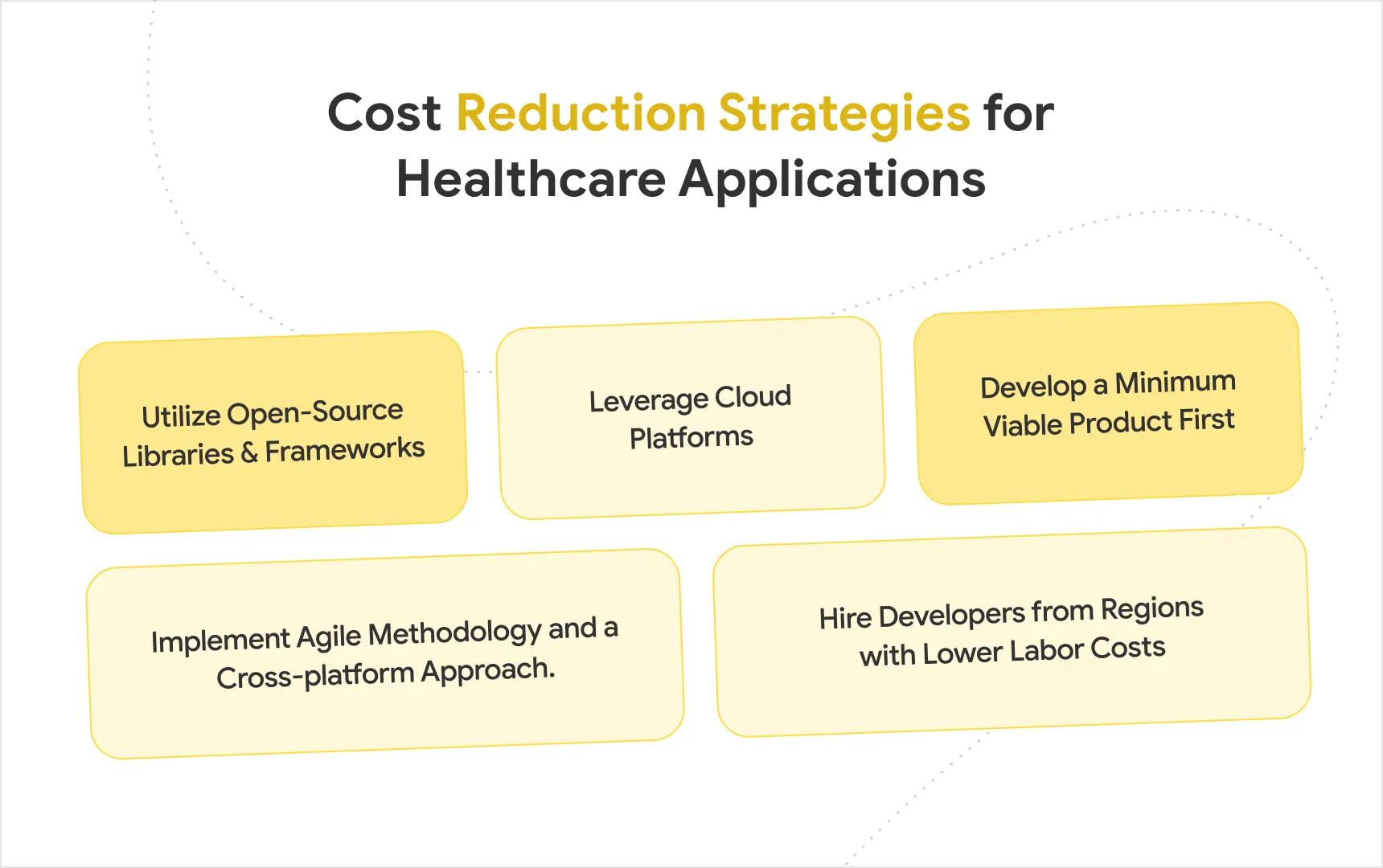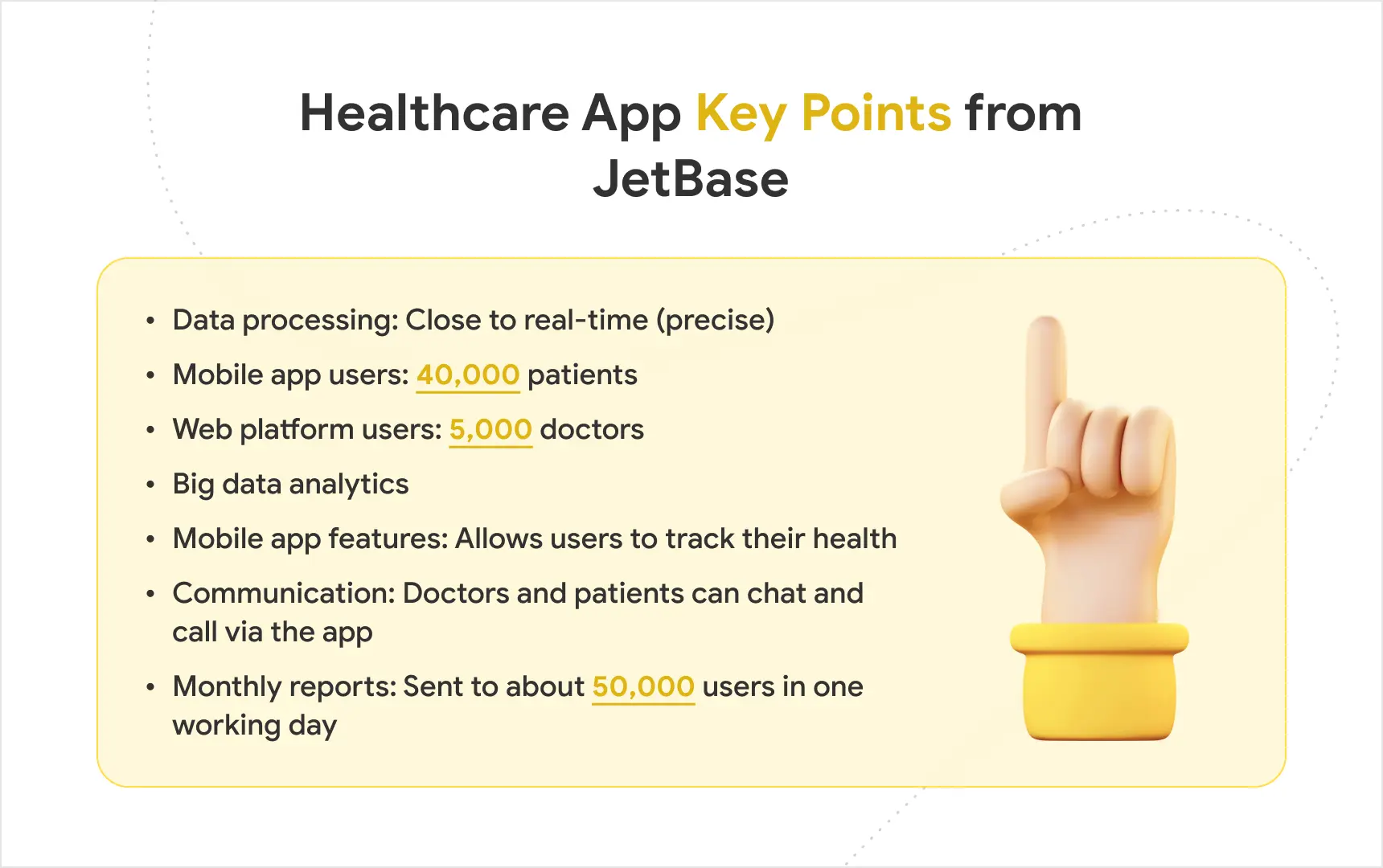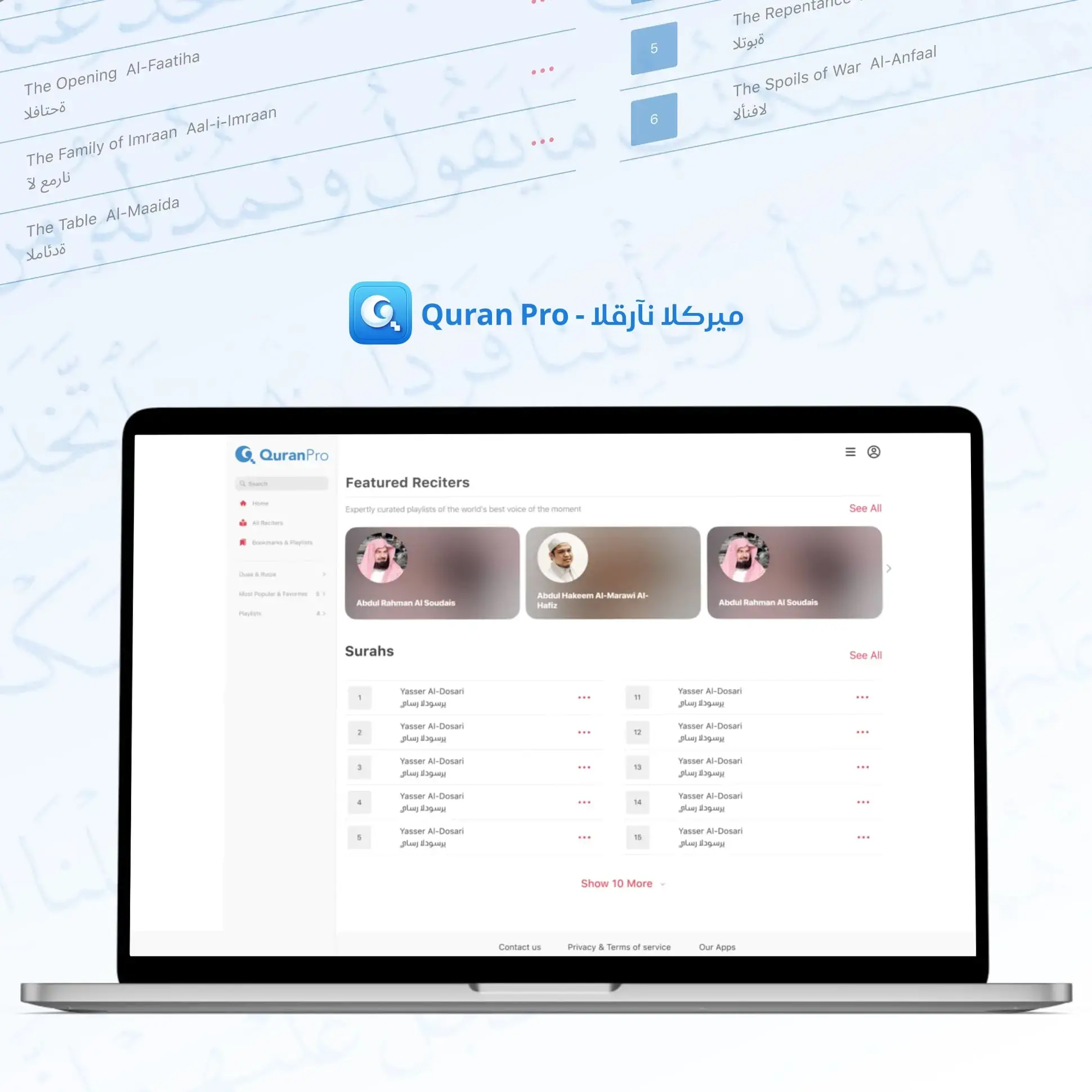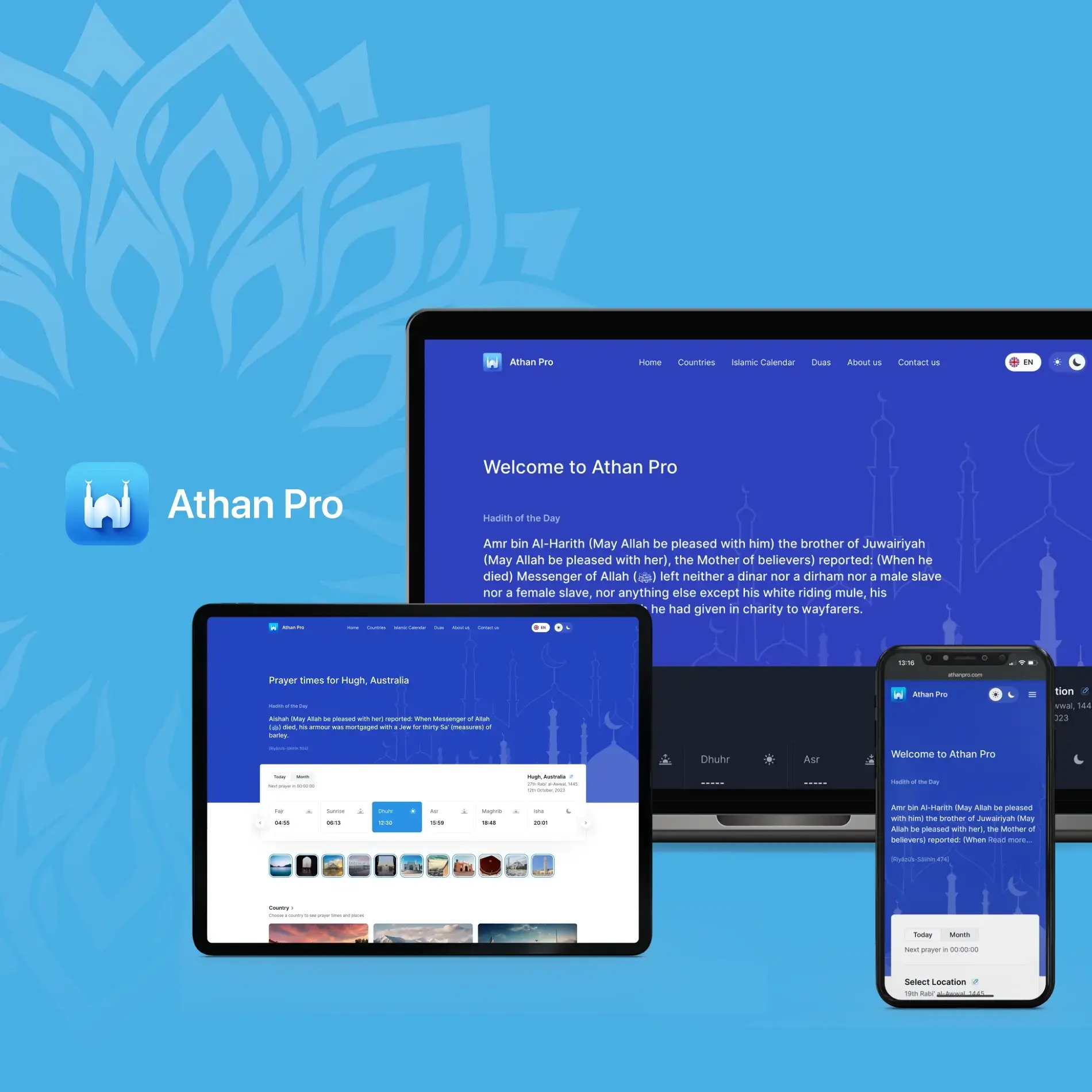The global market for mHealth apps is expected to expand significantly, according to Fortune Business Insights. It will increase from $80.87 billion in 2023 to $861.40 billion by 2030, with a compound annual growth rate (CAGR) of 40.2% over the forecast period.

Entering the market for medical health apps is quite promising but also presents some challenges. One significant challenge is meeting budget constraints, as the development of healthcare apps can be quite costly. The costs range from $30,000 to $500,000, depending on the project's size, scalability potential, and implemented features.
Integration of new technologies is key to success but also the most demanding aspect of the project budget. Medical technologies like telemedicine, remote monitoring, and device tracking are especially expensive to integrate into a medical app.
The approximate cost of integrating healthcare technologies:
| Type of feature | Functions | Costs of application with the feature integrated |
| EHR (electronic health record) | Transforms patient records into a digital format and offers a comprehensive platform for all healthcare information. | From 200 000 $ to 1 000 000 $ |
| Remote monitoring | Monitors patients’ health, allowing for a personalized approach and facilitating timely intervention by medical professionals. | From 150 000 $ to 300 000 $ |
| Video consultation | Allow patients and healthcare professionals to connect virtually, reaping the benefits similar to those of physical appointments, such as sharing medical consultations and receiving diagnoses. | From 100 000 $ to 400 000 $ |
| Device tracking | Connects seamlessly with health monitoring devices like glucose meters and blood pressure monitors to collect real-time data. | From 100 000 $ to 400 000 $ |
Cost Reduction Strategies
You might say — It is worth the expense but can it be less expensive? Well, the answer is yes. There are many ways to make development costs more economical.

Explanation:
- Hire developers from regions with lower labor costs. This can significantly reduce expenses without compromising quality.
- Utilize Open-Source libraries and frameworks. This solution can help you cut down on licensing fees and development time.
- Develop a Minimum Viable Product (MVP) first. This allows you to test the market with basic features, reducing risks.
- Leverage cloud platforms. Nowadays, this is a highly cost-effective solution as you don't need to invest heavily in physical servers and maintenance.
- Implement agile methodology and a cross-platform approach. These strategies further enhance effective budgeting for your project.
These strategies further enhance effective budgeting for your project.
Since our involvement in web development, we have tried many strategies, but this list is a selection of the most effective ones. We adhere to all of them and highly recommend applying as many as possible.
To be precise, our team of developers includes experts from Eastern Europe and Central Asia, who are expatriates from countries with lower taxes and living costs. Our experts are proficient in cloud systems like AWS and continue to grow with this expertise. AWS helps to implement the cross-platform approach as we describe further.
If you come to us and ask us to build an application or another web product, we usually suggest starting with an MVP as it's a crucial first step towards the stable functionality of the future product. We also work using the agile methodology and won't proceed further without ensuring that certain steps of product stability have been achieved.
To illustrate how a cost-effectiveness strategy can work in practice, we would like to present our case study from the healthcare industry, focusing on the cross-platform approach and a particular instrument — SQS by AWS.
How We at JetBase Minimized Costs in a Healthcare App Development Project — Case Study
When we started the healthcare development project for our client (the project is under NDA), we recommended using Amazon Web Services (AWS) for its architecture without hesitation. We were confident that AWS would reduce server expenses and provide greater flexibility for future implementations.
The project involves a web and mobile application designed to track and monitor data from health devices connected to the Internet of Things (IoT). This data helps healthcare professionals and medical service consumers stay informed about their interactions.
All the mentioned features above are quite expensive. The most costly features are online communication between patients and doctors and big data processing.
To make messaging more organized and cost-effective, we used AWS Simple Queue Service (SQS). We want to discuss this service in detail, along with other solutions we implemented to enhance cost-effectiveness and workflow efficiency.
About SQS and Its Advantages in Our Healthcare Study
In our project, we need to create a report and send it to thousands of users every month. The process involves several steps:
This process is time-consuming. More importantly, if we were to send all the reports simultaneously, the system would crash. To prevent this, we utilized AWS Simple Queue Service (SQS).
We configured the SQS service to handle batches of 100 reports at a time, which is the maximum our system can process efficiently. SQS takes the entire task of thousands of reports and manages them in portions. When one report is processed, the service immediately picks up the next one. This automated queuing ensures continuous processing without manual intervention, preventing system overload and optimizing efficiency.
SQS with API Gateway Integration
Since we work on AWS, which enables seamless integration between different services, we didn't stop at using SQS alone; we also integrated API Gateway WebSockets. This real-time service helped us reduce monthly expenses by a factor of ten.
By leveraging AWS Lambda, we can reserve data processing storage in advance, measured in gigabytes per second. For example, we can reserve 1 GB of RAM for 10 seconds. Although we can't exceed those limits, Lambda provides excellent control over our budget since we only pay for what we use.
Here's a comparison to illustrate the cost control:
| 10 seconds * 10 GiB = 100 GiB-seconds | You pay for 100 GiB-seconds |
| 10 seconds * 1 GiB = 10 GiB-seconds | You pay for 10 GiB-seconds, which is less |
The cost is $0.0000033334 per GB-second.
Integrating SQS with Lambda and API Gateway allowed us to reduce the time for sending real time data to thousands of doctors from 10 seconds to 0,5 seconds. Imagine needing to deliver 1000 emails to 1000 doctors. If you had one mailman, it would take a lot of time. But with SQS, it's like having 1000 mailmen delivering emails in parallel.
There's no need to pay 1000 imaginary mailmen—just one service handles this task, making it a very economical solution.
Other Challenges
There are many more challenges in our project that our team of developers handles on a daily basis. One of the biggest challenges is processing data from multiple sources.
Every action in our system is recorded, and by the end of the month, it results in a huge amount of data. We analyze all that data and build different reports for purposes such as billing, analytics, and more. To achieve this, we combine different AWS services such as SNS, SQS, S3, OpenSearch, RDS, and Lambda.
For example, in our project, if a doctor calls a patient and talks for 5 minutes, and then calls again a few hours later for another 5 minutes, the system considers these as two different sessions, even if it's the same conversation. Over the course of a month, these short calls between doctors and patients can accumulate to 1 hour of total time. We take all the data about sessions in advance and collect it in one database in real time so that, at the end of the month, the system does not process a large amount of data all at once.
— Atajan, Full Stack Developer at JetBase
How We Implement New Features and Their Costs of Implementation
Not long ago, we integrated Chat GPT to assist doctors in writing text messages and report summaries. Initially, the costs for implementation were high. After analyzing the situation, we decided to minimize costs by implementing a less expensive model of Chat GPT.
Our client trusts us with cost-effectiveness. Together, we test solutions and ideas, analyze the results, and if a solution or idea serves the project well, we continue to invest money and effort into it. For example, with Chat GPT, we wanted to try this idea. We implemented a simple version, then improved it in certain aspects, verified cost-effectiveness, and made necessary decisions. That's how we work at JetBase on new feature implementation.
— Atajan, Full Stack Developer at JetBase
To illustrate, the simple version of the Chat GPT feature took 20 to 40 hours of development time. However, starting with a more complex version of the feature would have taken 10 times more development hours, resulting in significantly higher costs for our client.
Wrapping Up
Not only have we optimized data processing by using SQS and other solutions, but we have also significantly reduced expenses on certain infrastructure components of the project.
Additionally, we continue to implement new features and services while always adhering to a cost-effective strategy.
As a team of developers with expertise in AWS, we at JetBase consider all the opportunities Amazon Web Services offers and strive to find the best solutions for our clients and teammates. Working on AWS allows us to reduce costs and eliminate unnecessary tasks like server maintenance. Our developers are focused on coding and their expertise in crucial development aspects like automation, scalability, and security.
The JetBase team is eager to take on your development project. Please don't hesitate to contact us and submit your request. The consultation with our experts is free.














